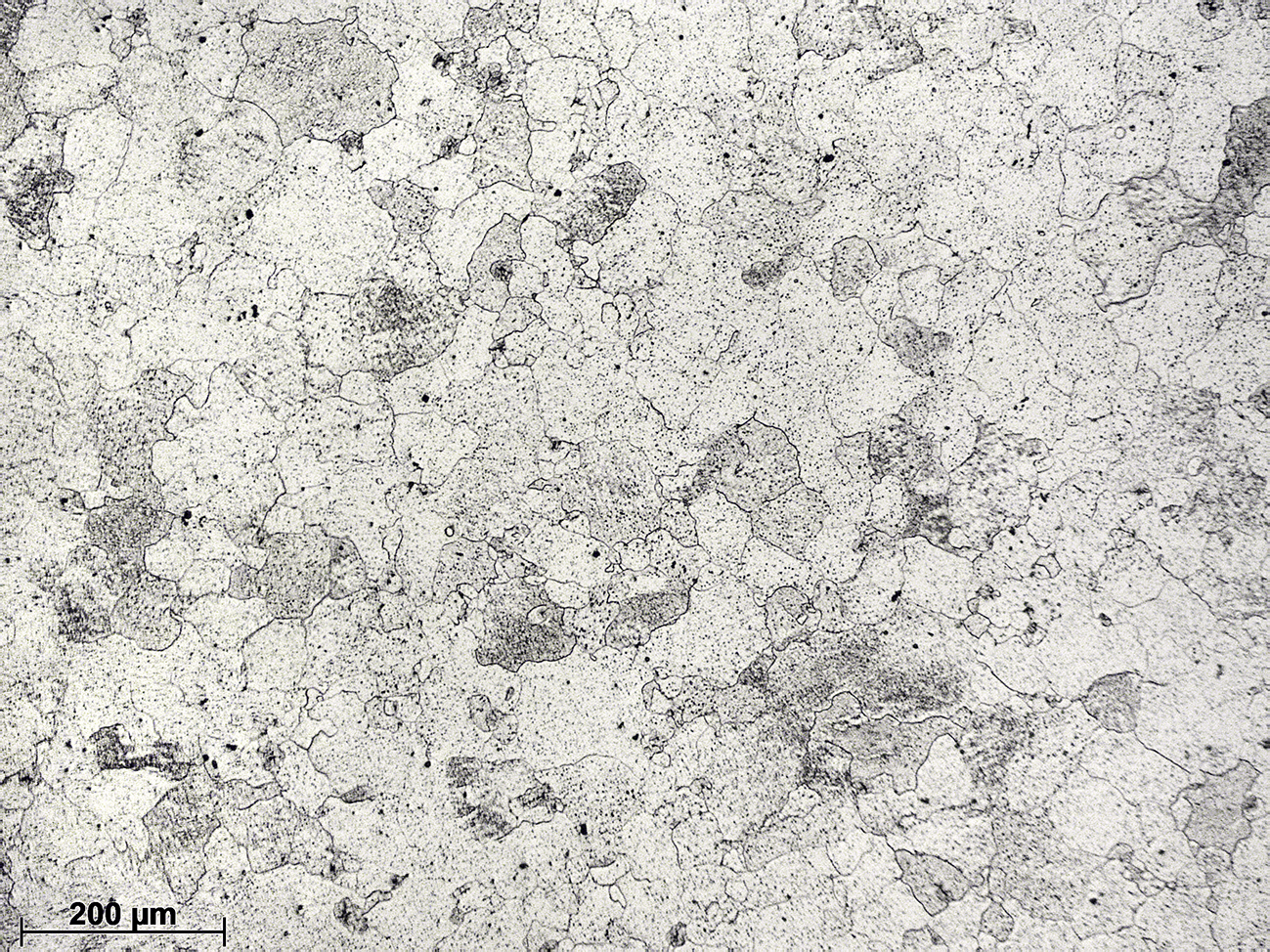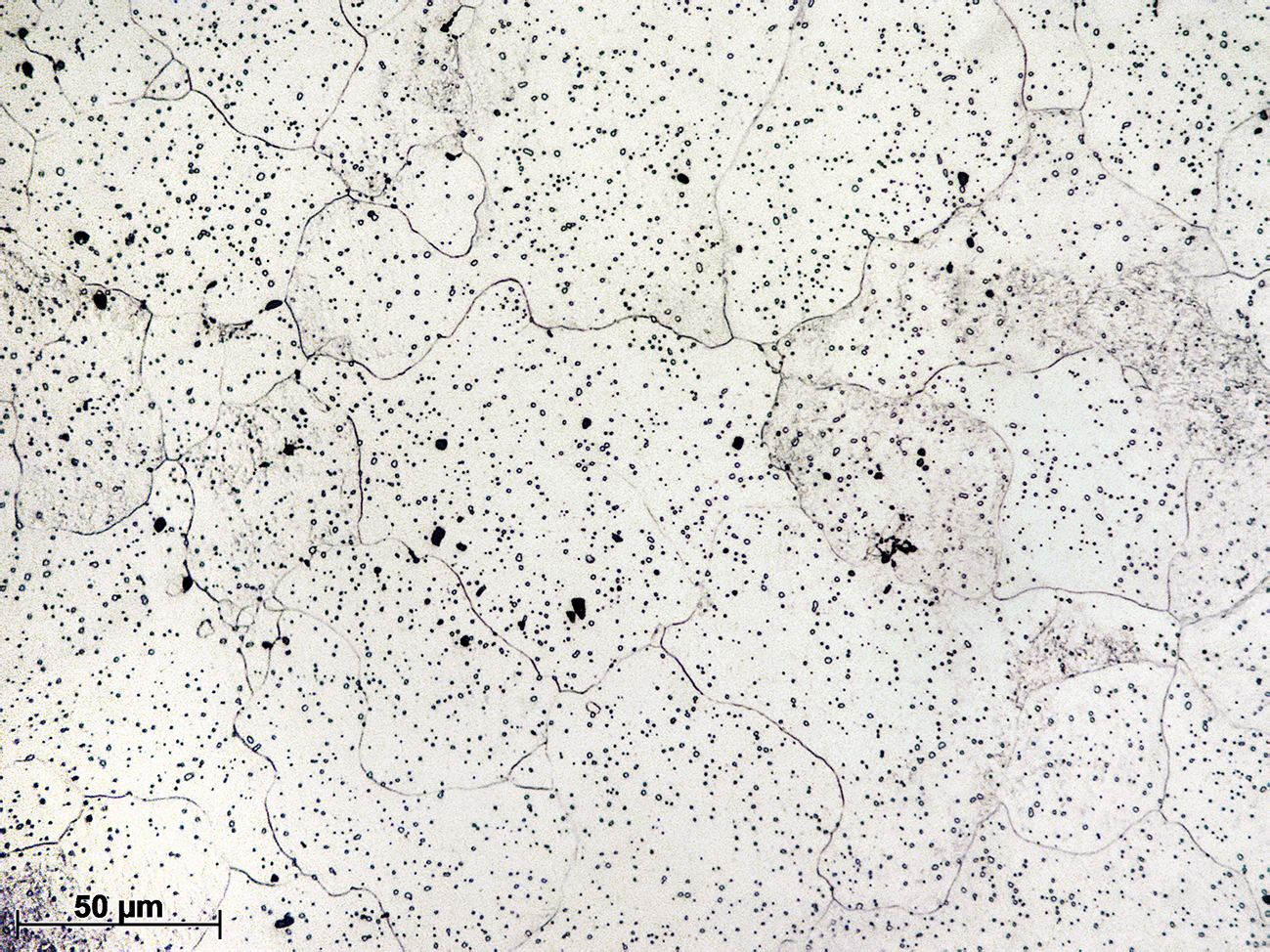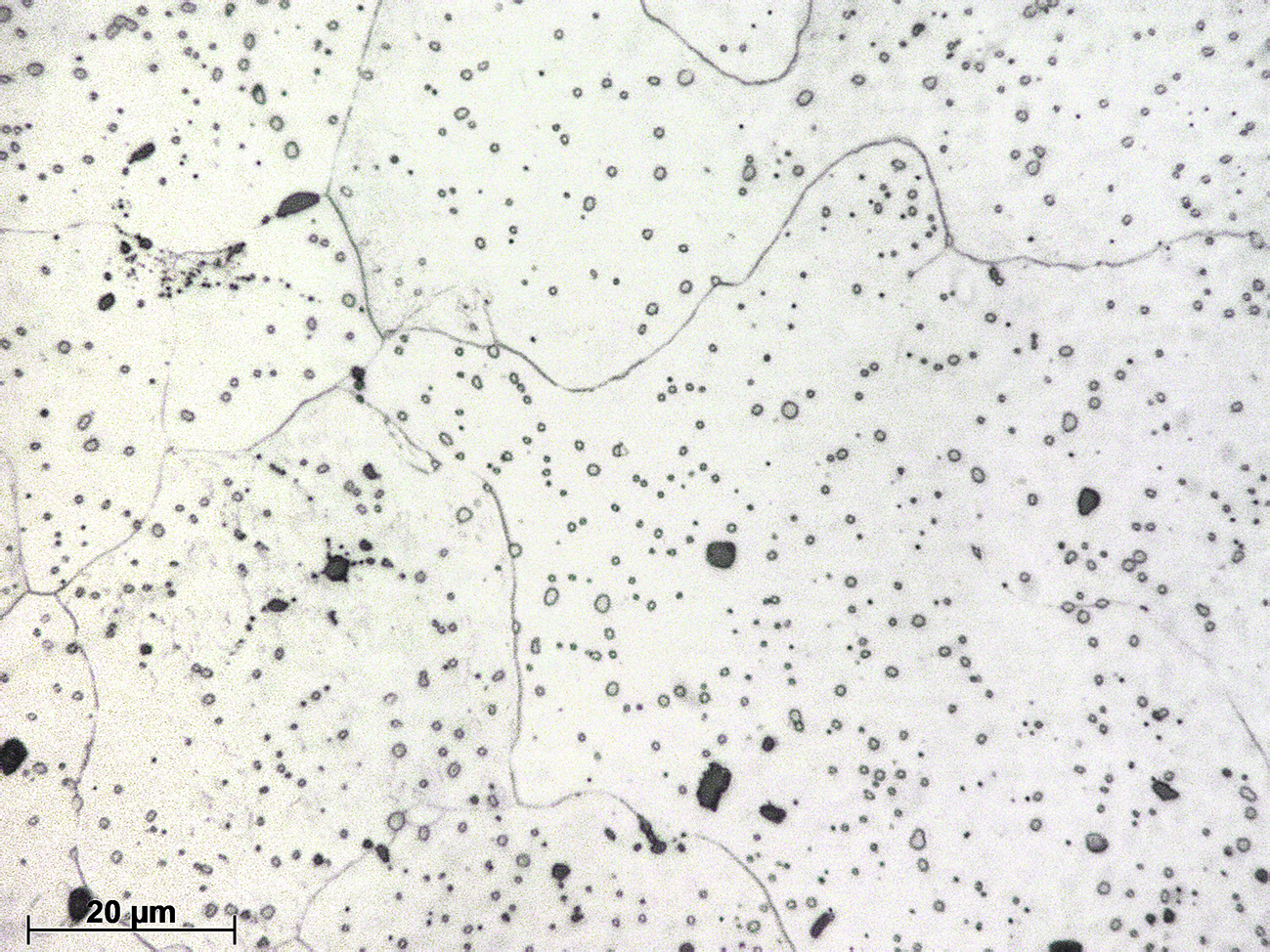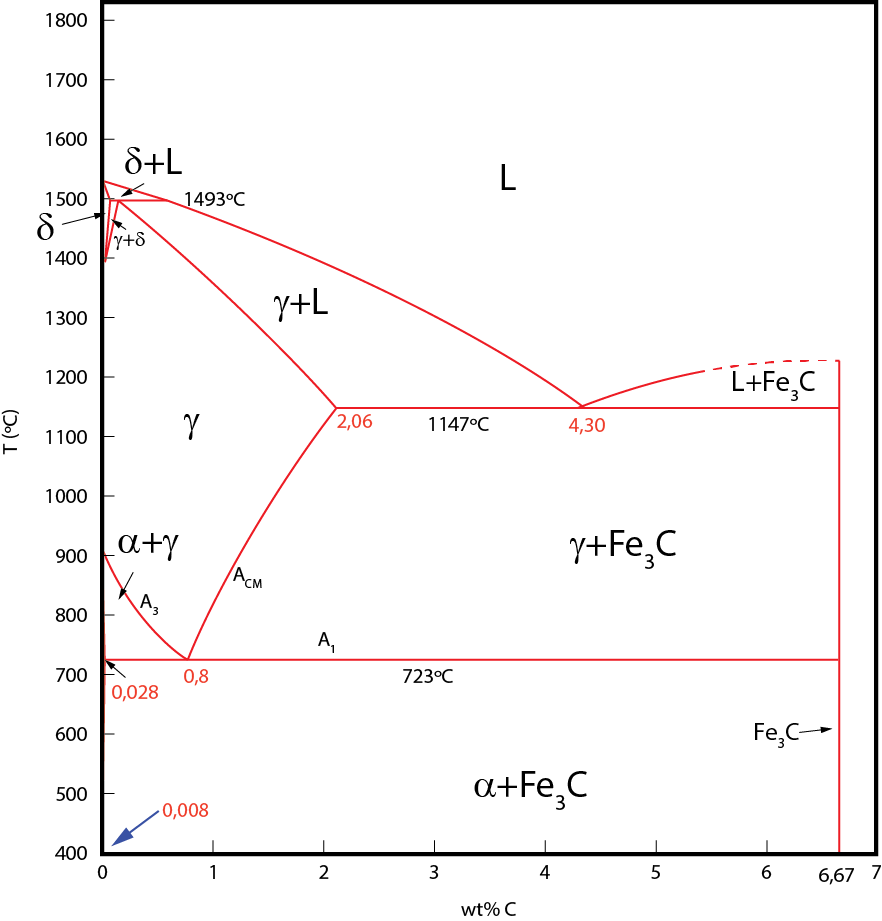AC7
F114 (spheroidizing)



Composition: 0.40-0.50 C; 0.50-0.80 Mn; 0.15-0.40 Si; <0.035 P; <0.035 S
Processing: F114. Spheroidizing.
Etching: 15-30s immersion in 2% nital.
The micrographs show the typical microstructure of a spheroidized steel; a ferritic matrix and cementite (Fe3C) globules uniformly distributed. The spheroidizing heat treatment for this particular case consisted of two steps: (a) austenizing at 830-850ºC and water quench: the fast cooling rate impedes diffusion and martensitic transformation occurs; and (b) annealing at 710ºC for 72 h followed by slow cooling (10ºC/h) until 650ºC and furnace cooilng until room temperature.
The martensite phase that forms in this steel contains 0.45%C in solid solution, whereas iron can only dissolve 0.008%C at room temperature under equilibrium conditions. This difference in C solubility creates high stresses. Therefore, during the applied heat treatment carbon diffuses out of the martensite and forms globular Fe3C, reducing the stresses in the material. Cementite nucleation is favoured at the locations of defects in the martensite (e.g. twins).
This steel can be surface hardened by processes such as induction hardening, flame hardening or quenching&tempering. These surface treatments produce a steel with high wear resistance but maintaining good toughness. This is a steel commonly used for shafts, cranks, bolts, etc.
Fe-Fe3C diagram


This work is licensed under a Creative Commons Attribution-NonCommercial-ShareAlike 4.0 International License.

